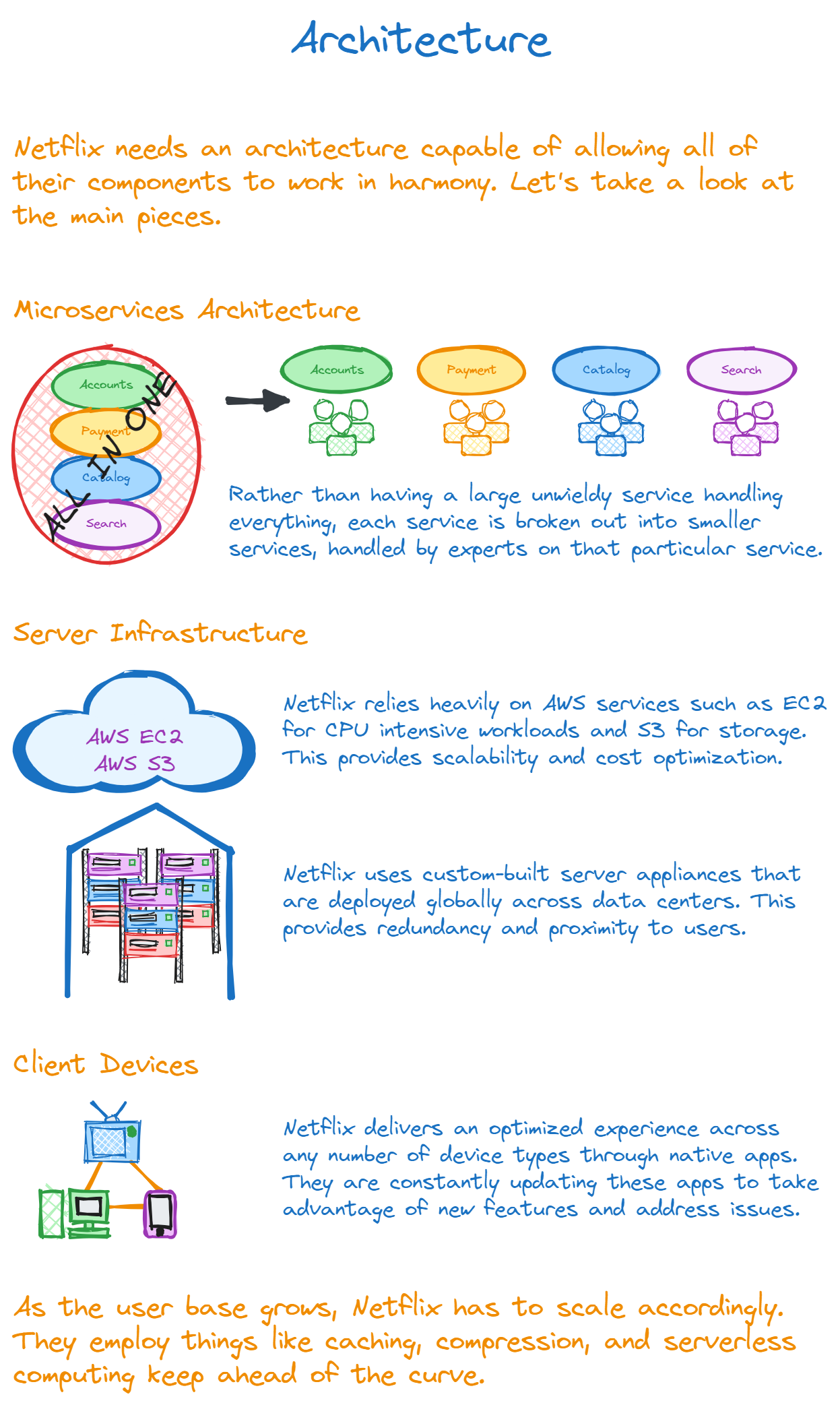
Microservices Architecture
Netflix's platform is built as a microservices architecture consisting of smaller, decentralized services rather than a monolithic application. Some examples of microservices include the Account Service, Catalog Service, Payments Service, and Search Service. Each service has a focused capability and is maintained by a small team.
The microservices interact via REST APIs and service discovery systems like Eureka handle registration and lookup of services. Load balancers then distribute requests across available instances of each service. This architecture improves fault isolation and allows independent scaling of services.
Server Infrastructure
Netflix relies heavily on commodity server hardware in the Amazon Web Services (AWS) cloud to achieve scale and optimize costs. Media encoding, analytics and other compute intensive workloads run on EC2 instances. S3 handles bulk storage of media files and metadata.
For its on-premises infrastructure, Netflix uses custom-built server appliances. Servers are deployed globally across data centers for redundancy and proximity to users. Containers and orchestrators like Kubernetes help automate deployment, scaling and management of microservices across on-prem and cloud.
Client Devices
Netflix offers native apps for major mobile and TV platforms including iOS, Android, smart TVs, gaming consoles etc. This allows delivering optimized streaming experience across devices. The responsive web interface provides another option for accessing the service directly from browsers.
Netflix continually develops its apps to take advantage of new features and address issues on client devices. This constant iteration ensures Netflix adapts to new devices and form factors entering the market.
Scaling Challenges
As Netflix's content library and subscriber base grow exponentially, the platform needs to scale accordingly. Strategies like compression, caching, and optimized media encoding help minimize resource usage despite increasing loads.
Horizontally scaling microservices across more servers gives Netflix the ability to handle spikes in traffic. The cloud infrastructure also provides practically unlimited on-demand compute capacity.
By pioneering new technologies like serverless computing, Netflix continues innovating to anticipate future demands.

